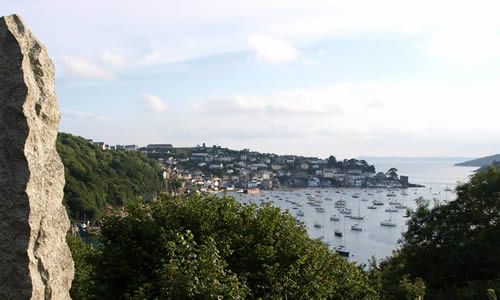The Rashleigh family, Charles and the creation of Charlestown, a talk delivered by Andy Trudgian 10 February 2024
One man, one visionIt was Charles Rashleigh, a member of the Rashleigh family of Menabilly, near Fowey, who had the vision to create Charlestown. Already an astute landowner and businessman with premises in St Austell, he created Duporth Manor as his new residence in 1781, and then commissioned the famous engineer John Smeaton in 1791 to design and build a harbour and dock to export copper from the local mines. A planned village was developed around the harbour with all the associated industries …. blacksmiths, coopers, tanners, masons, ropemakers…and eventually a Methodist chapel, school, inn, hotel and church. The village even had its own gun battery during the Napoleonic Wars to protect the harbour from marauding French which still exists today, on the western cliff top. It also had a well drilled artillery company to fight Charlestown’s corner.
Scandal – Dingle and Daniel
One of the most extraordinary stories about Charles Rashleigh is how he was “betrayed” by, not just one, but two men. Joseph Dingle plays an increasingly important role in the planning and building of the village and harbour, becoming superintendent of works. Over time, he systematically embezzled thousands from the project. Finally, Dingle was found guilty and owed Rashleigh and others in the region of £32,000, over £2.5 million in today’s money. Dingle was declared bankrupt and died a pauper. But it also largely destroyed Rashleigh. To make matters worse, he was then duped by another manservant, Joseph Daniel. He had hopes of Daniel becoming a magistrate which required that he was a property owner, so Rashleigh bequeathed him his house and estate at Duporth on the assumption that it would be returned to him later. But it wasn’t! The result of all of this was that Charles Rashleigh died in 1823, a broken man, and bankrupt. His daughter, Martha, who would have lived in luxury in Duporth Manor was forced out to live in a small cottage in Holmbush. And two years later, in 1825, Messrs Crowder and Sartoris, bankers, and trading as Charlestown Estates, accepted the leasehold properties of the village and the harbour in lieu of debts owed. And so it remained in the hands of Charlestown Estates as owners of the port until sold in 1986.
Unspoilt and Unique
The planned nature of Charlestown in Georgian times, and its ownership in the hands of, firstly, Charles Rashleigh and then Charlestown Estates for close to 200 years, has resulted in a port that is unique. Its inscription as part of the Cornish Mining World Heritage Site (WHS) in 2006 honours this uniqueness.
"The best preserved china clay and copper Georgian port in the world, with fine examples of vernacular architecture, nearly all buildings listed Grade II and a picturesque harbour. It remains relatively unspoilt to this day".
WHS inscription
10/2/2024

